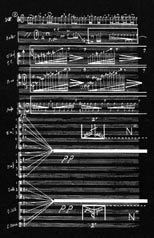 |
"If you like modern music, then put your music theory books away, pull your hat down, turn your coat collar up, and take a walk on the wild side with Antanas Rekašius. This composer is an experience unto himself." This epigrammatic quote from Stephen Ellis' article in "Fanfare" magazine of 1986 perhaps says it all about the man and his music. Antanas Rekašius was an ever-present, fairly laid-back personality, and aware of his own worth. At the same time, he was very mysterious, and many details of his biography will likely always remain a secret. He created his own image, and his work may well have been part of this well thought-out image.
For several decades, Antanas Rekašius was the most provocative composer on the Soviet Lithuanian music horizon. His brazen disregard for the conventions of socialist music life, his bitter irony and buffoonery turned many of his works into performances that were regarded as subversive activity at that time in the USSR.
Rekašius entered the music profession as a mature adult; he had to catch up to his contemporaries, and to decide what kind of path he is willing to choose for himself. His first string quartet, written in a naive romantic style while studying composition with Julius Juzeliūnas at the Lithuanian State Conservatory, has nothing in common with any of his later works. After graduating from the conservatory in 1959, he became one of Lithuania's most prolific composers, and for most of his life earned his living as a composer. From his very first independent works, it became clear that the orchestral element held the most affinity for this quick-tempered and extroverted composer (Rekašius wrote nine symphonies); its expressive gestures were also frequently embodied in the dance movement of his ten ballets. Initially, Rekašius' ballet themes were fairly in accord with official ideology (e.g. Beacon of Happiness, 1959; Fading Cross, 1963) and were praised as such, but with a few exceptions, his ballets soon disappeared from the functioning repertoire. He did not adapt well to the official style of that period, and after travelling the standard Soviet path for a short while at the beginning of his career, he immersed himself in a new creative current. This included aleatory and sonorism adopted from the Polish school.
Rekašius' Metaphony for violin and orchestra (1971) became his first mature work. It was followed by Diaphonia for cello and orchestra (1972), Solar plexuses for saxophone and orchestra (1977), the Fifth Symphony (Segments) (1981), Autocollage No.1, No.2 and No.3, and a great many chamber works. His work was acknowledged rather late - and it happened in the United States. Reputable music journals had high praise for an LP (Verra Records 101, 1985) and a CD (ELLA Records 71119-1, 1991) of his compositions, both of which were released in the US. His Third String Quartet (1976), performed by the Vilnius String Quartet in many countries throughout the world, was outstandingly successful. References were made to his symphonic qualities, and to his affinity with Mahler, Ives, Shostakovich, Schnittke and Martland.
 |
Just as basic elements (e.g., fire, wood, stone, sky, clouds, bowler-hatted men) recur in many Magritte paintings, so too does Rekašius have this: glissandos; slow, swelling pulsations; jazz; aleatory; thudding, pounding percussion strokes and powerful chordal blows; and, above all, kinetic, linear, motoric drive. Add in dynamic extremes, including some of the loudest sounds this side of a Metallica or Guns'N'Roses concert. It all works. Nothing is ever belabored, nothing goes on too long as Rekašius has the acute timing of a skilled photojournalist and a master wallpaper-hanger's ability to camouflage seams.
Benjamin Pernick, Fanfare
Rekašius' music is seen as strong and suggestive within the context of today's postmodernism. Embedded in its foundations are snippets of diverse styles, trivial melodies, and often primitive harmonies - the experience of music in everyday life. But Rekašius seems to pull these banalities out of the background of familiar sound, and to give them a completely different meaning, where irony, the grotesque, and teasing of the audience intertwine with unexpected grief, anxiety and tragedy. In a completely natural way, he wraps that banality in unexpected tones, aleatory and embellishments. It becomes a candidly histrionic manifestation, a sound spectacle, with eloquence, character vivacity and temperament at the forefront. Rekašius was a poet of hypertrophy in terms of sensuality, hysteria, nervousness - and at the same time of playfulness, surprise, contrasts and juxtapositions. At times the result is a seething, bubbling, somewhat unclearly articulated torrent of sound, like a stirred up flooding river, and at other times - an odd structure reminiscent both of baroque music and a totally surreal painting.
Rekašius' music, like all aleatoric works, is performer-oriented, and difficult to understand just from the notes. He enjoyed working with musicians - not so much in explaining what he'd written, as in having them understand what he wanted to hear. During rehearsals he would search for the articulation, ornamentation, texture, colour and character that he couldn't adequately indicate in the score. Rekašius transformed himself through his performers - here he was real, unpretentious, happy and open. He was inspiring, and the performers would resolutely participate in his challenges - saxophones miaowing during serious concerts, golden teeth glistening as they sang with mouths wide-open and exposed to sexual imagery.
Although, with the reestablishment of Independence in Lithuania, Rekašius' music seemed to lose its former freshness and relevance, it has lately again aroused interest, and is undergoing a renaissance. It is not surprising - for one has to admit that nothing of its kind has emerged in Lithuanian music to this day.
© Donatas Katkus
Lithuanian Music Link No. 9


